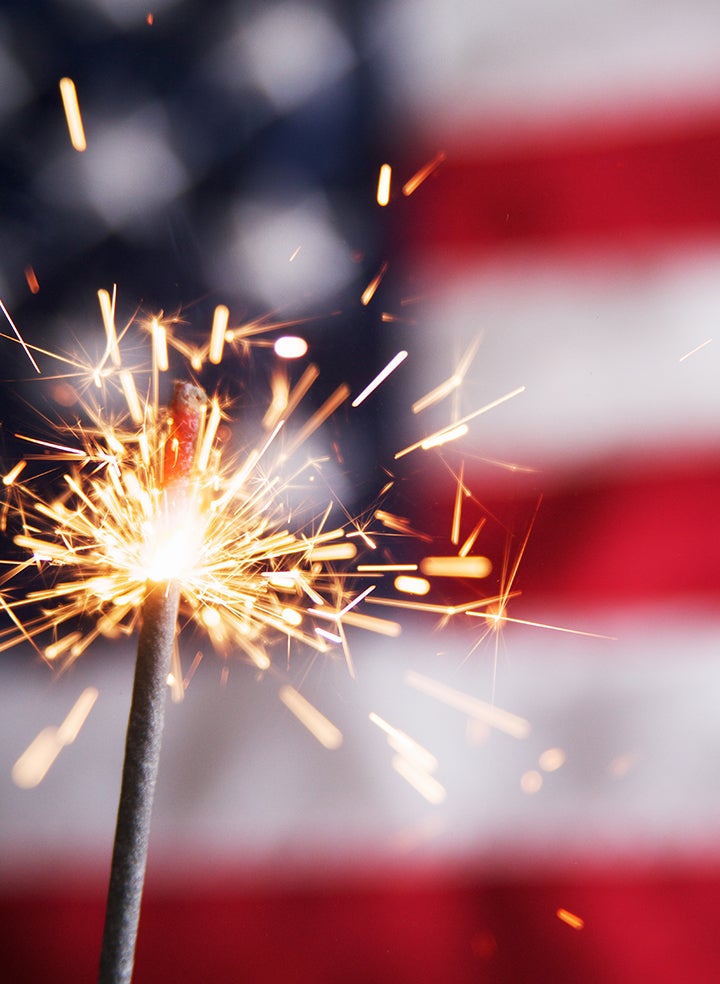10 Tips for a Safe Fourth of July
Independence Day is for celebrating, not worrying. Here are ten simple tips so we can all stay safe.

Fourth of July weekend is finally here! And that means road trips, family get-togethers, BBQs, fun in the sun, and marvelous fireworks displays. However, each July 4th, thousands of people are injured while using fireworks. Despite the clear dangers, people often overlook the risks associated with using fireworks, which include burns and other injuries, fires, and even death. With this in mind, we’ve created a guide to help keep you and your family safe around fireworks this Fourth of July.
1. Leave it to the pros.
The best way to stay safe when it comes to fireworks is to avoid using any fireworks at home. Instead, you and your family should attend public fireworks displays. We suggest that you leave it to the professionals.
2. Know the risks.
Fireworks are dangerous! According to the NFPA, US hospital emergency rooms treated an estimated 10,500 people for fireworks-related injuries in 2014. Sparklers alone account for over 25% of fireworks-related ER visits. Furthermore, fireworks cause an estimated 18,500 reported fires in the US each year.
3. Follow the rules.
We highly recommend not using any types of fireworks at home. However, if you plan to use fireworks, be sure they are legal in your area before using or buying them. When purchasing fireworks, get them from official stands and tents.
For more information regarding firework laws in your area, go to https://www.americanpyro.com/state-law-directory and choose your state.
4. Adult supervision required.
Supervision is one of the most important safety measures to take when using fireworks – even those as simple as a sparkler. Fireworks are fun, but keep in mind they aren’t toys. You should take the time to talk to your children about the dangers of fireworks. That said, ALWAYS have a responsible adult supervise all fireworks activities and NEVER allow children to play with or ignite fireworks (or sparklers). Sparklers burn at 1200 degrees Fahrenheit, hot enough to cause 3rd degree burns. Instead of sparklers, try giving your children glow sticks to play with. They last much longer, come in a variety of fun colors, and, needless to say, are much safer!
5. Check your surroundings.
Designate a specific area for lighting fireworks that is a safe distance from buildings, vehicles, and most importantly, people. Make sure that the area is also free of bushes, dry grass, trees, streamers, balloons, flammable helium, and other fire hazardous materials.
6. Dress appropriately.
Make sure the person lighting fireworks protects their eyes from the heat and potential sparks by wearing safety glasses. They should also avoid wearing loose clothing that can catch fire.
7. Know what you’re working with.
Always read the labels on the packaging and follow the instructions so that you understand exactly what each firework will do.
8. One at a time.
Fireworks should only be lit one at a time and the person lighting them should immediately move away from the firework after lighting it.
9. Keep your distance.
Only light fireworks on the ground and in areas that are dry and fire-resistant. Stand a safe distance away from lit fireworks. If a device does not go off, do not stand over it to investigate. Wait several minutes and then soak it with water before disposing of it. Never try to relight or pick up fireworks that haven't ignited fully.
10. Be prepared.
You should take all necessary measures to ensure that you and your family are prepared if
something happens to go wrong. Keep a bucket of water nearby and make sure you have easy access to a hose in case of fire or other mishap. It’s also a good idea to have a portable fire extinguisher close by and know how to operate the fire extinguisher properly. If someone is injured by fireworks, immediately seek medical attention.
